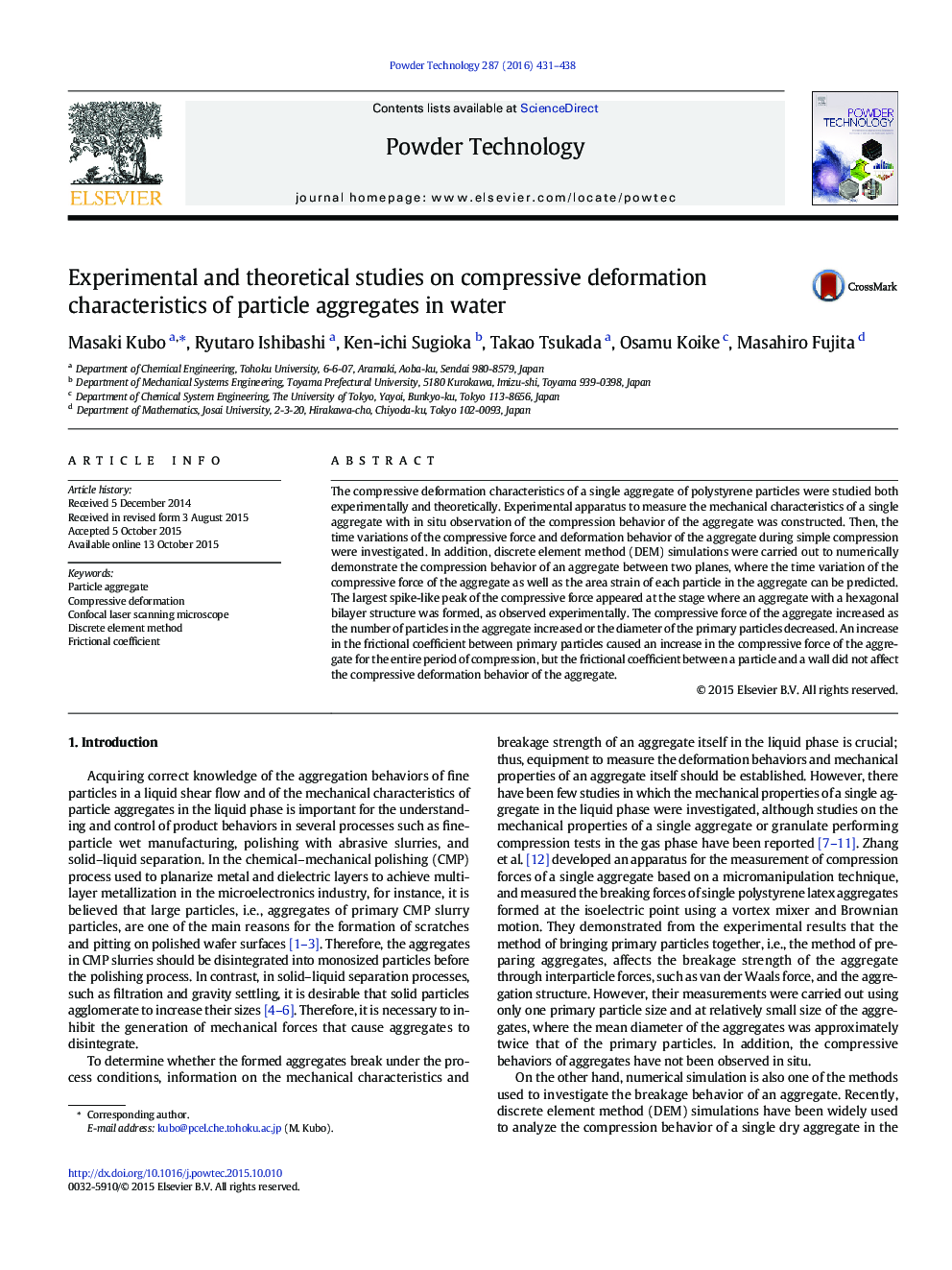| Article ID | Journal | Published Year | Pages | File Type |
|---|---|---|---|---|
| 235194 | Powder Technology | 2016 | 8 Pages |
•We investigate the compressive deformation of a single aggregate of particles.•We examine the deformation characteristics both experimentally and theoretically.•A nearly spherical aggregate changed through trilayer into monolayer.•An aggregate with a hexagonal bilayer structure gave the largest compressive force.•A high frictional coefficient between particles caused a large compressive force.
The compressive deformation characteristics of a single aggregate of polystyrene particles were studied both experimentally and theoretically. Experimental apparatus to measure the mechanical characteristics of a single aggregate with in situ observation of the compression behavior of the aggregate was constructed. Then, the time variations of the compressive force and deformation behavior of the aggregate during simple compression were investigated. In addition, discrete element method (DEM) simulations were carried out to numerically demonstrate the compression behavior of an aggregate between two planes, where the time variation of the compressive force of the aggregate as well as the area strain of each particle in the aggregate can be predicted. The largest spike-like peak of the compressive force appeared at the stage where an aggregate with a hexagonal bilayer structure was formed, as observed experimentally. The compressive force of the aggregate increased as the number of particles in the aggregate increased or the diameter of the primary particles decreased. An increase in the frictional coefficient between primary particles caused an increase in the compressive force of the aggregate for the entire period of compression, but the frictional coefficient between a particle and a wall did not affect the compressive deformation behavior of the aggregate.
Graphical abstractFigure optionsDownload full-size imageDownload as PowerPoint slide
